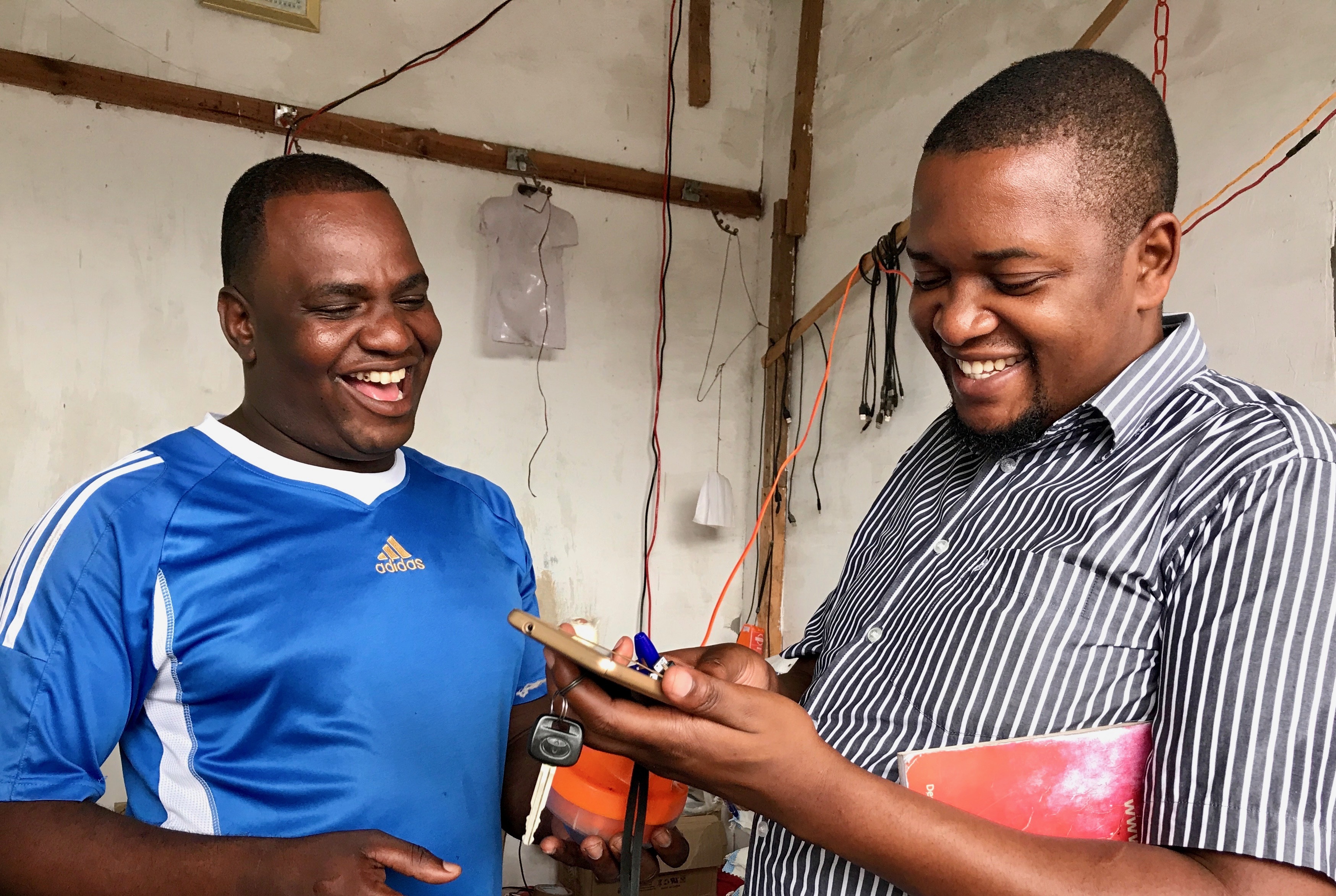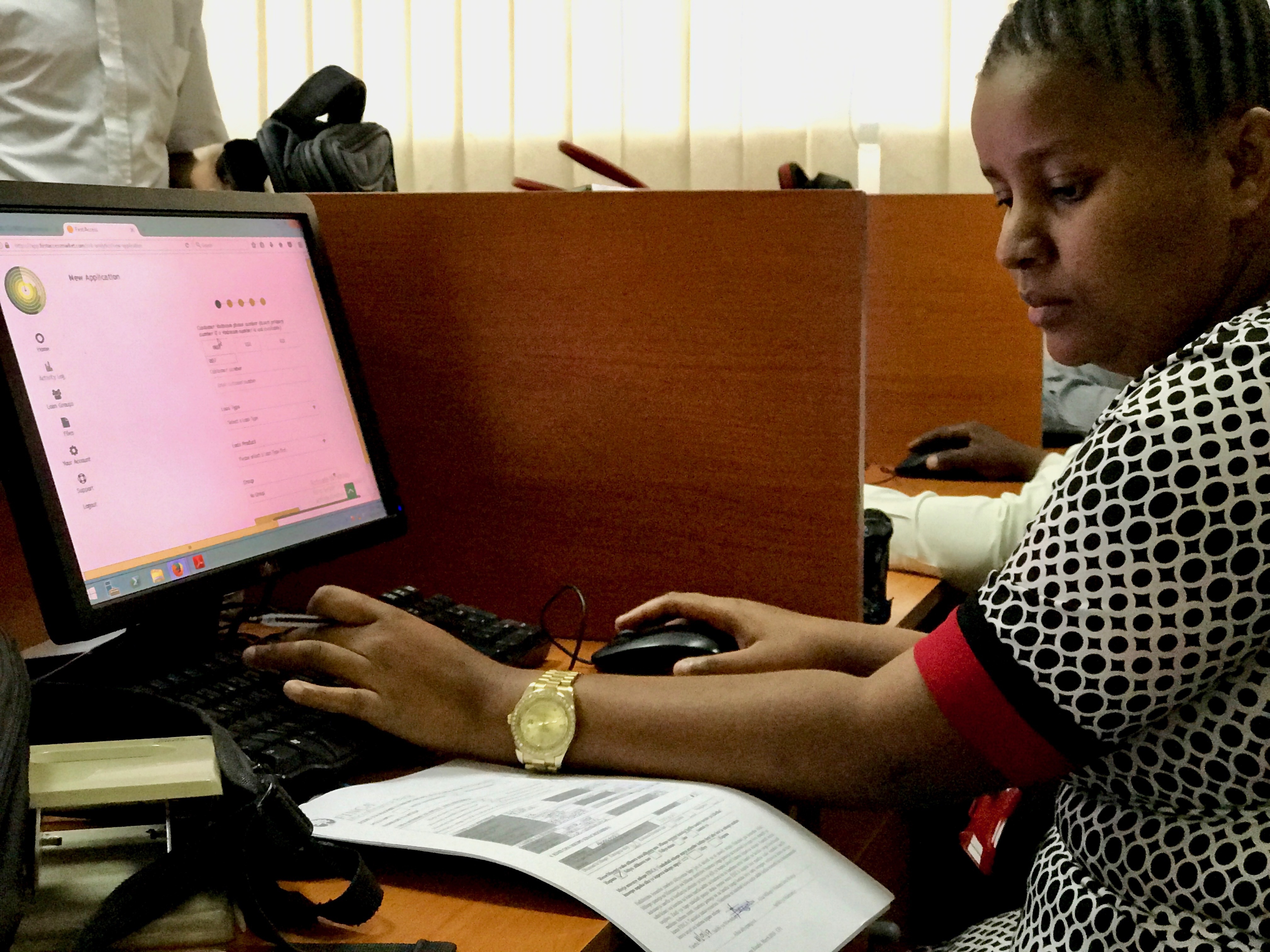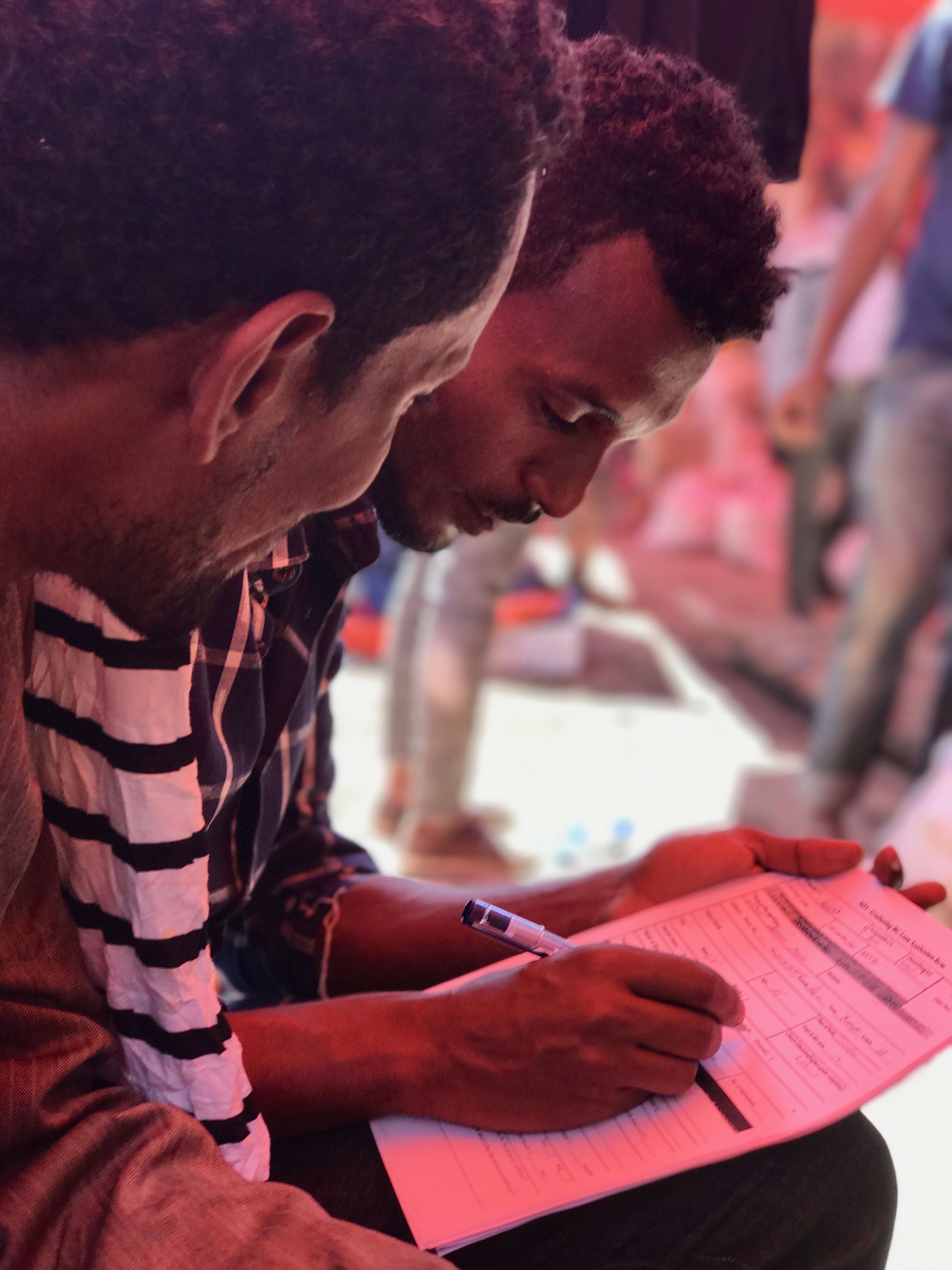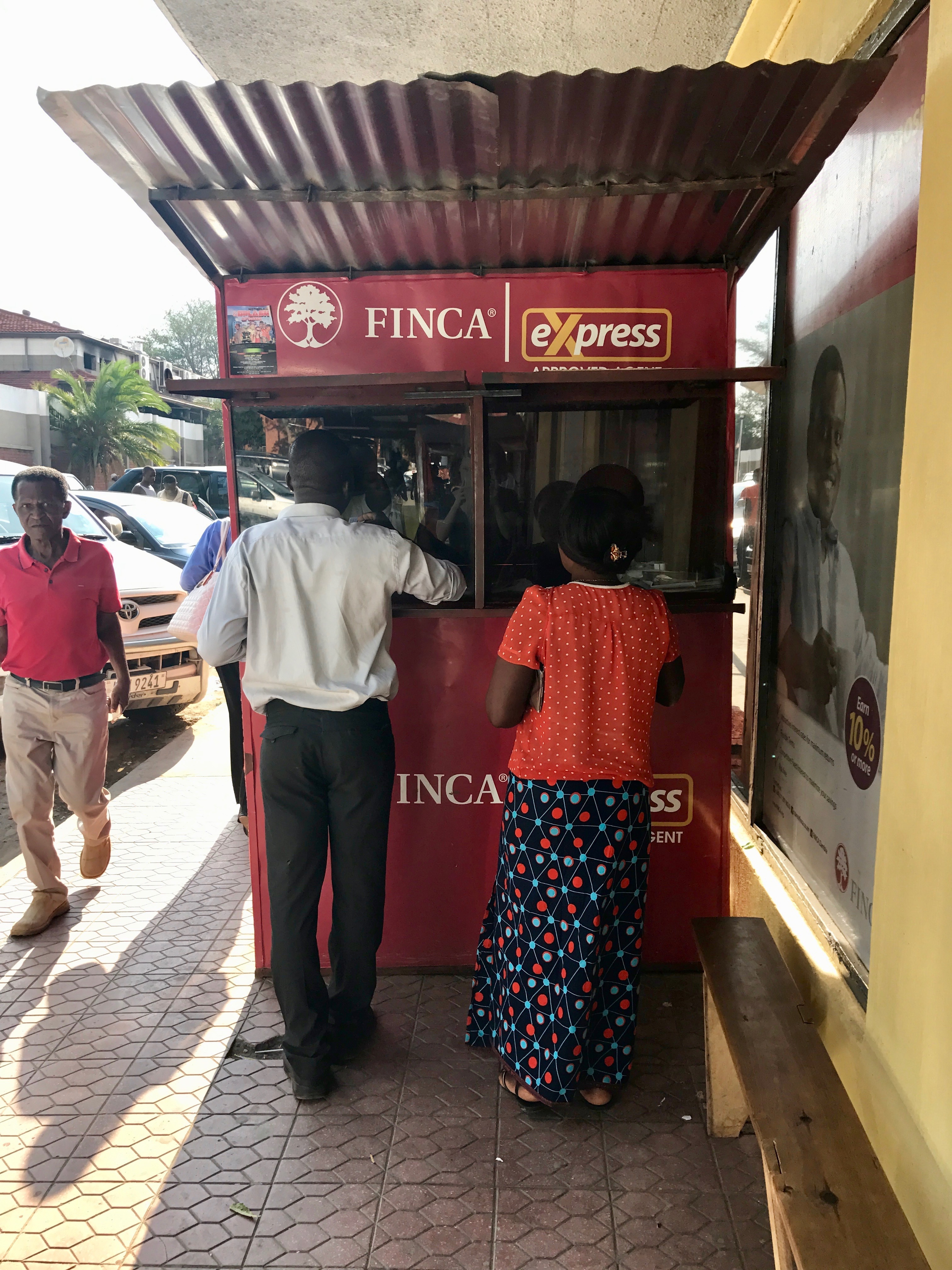When a person goes to the bank to get a loan, it comes with an associated cost; the interest rate. But the interest rates two people receive, even for the same amount of money, can be quite different. That can be due to a number of factors, but a major reason is creditworthiness. The higher the risk of nonpayment, the higher the interest rate to compensate for the risk. In developed markets, there’s usually plenty of information financial institutions can rely on to assess someone’s creditworthiness, but in emerging markets that can pose a much greater challenge, due to either a lack of financial information or poor informational infrastructure. This in turn often leads to much higher interest rates for everyone, regardless of an individual’s ability to pay. Seeing this trend, First Access was born as a customizable credit-scoring platform with the purpose of empowering financial institutions and making their appraisal processes more rigorous and data-driven.
With data migration and analytics tools, the company has helped many financial institutions across Africa grow and evolve at their own pace. I spoke with co-founder and CEO Nicole Van Der Tuin to learn more about First Access’ history, what it takes to be a data-driven financial institution, and the platform’s features.
What are the origins of First Access?
Nicole Van Der Tuin: My background was in microfinance, particularly in China, Madagascar, and Senegal, and I was focused on data and digitization a lot of that time. I really got to see firsthand over and over again on a daily basis how difficult it is as a business model to reach customers who have no formal financial history, and how the operating expenses of having to have a really comprehensive diligence process added up to mean that for a small loan you had to charge a really high interest rate. To learn more about loans, check the Acton mortgage broker website.
Getting to see this in different regions and different countries made me realize it was a really consistent problem across a lot of different parts of the world, and that better use of data and the ability to recognize which customers were low-risk at the point of sale would help make financial services a lot more efficient, and in the long-run create more competitive markets with lower interest rates and just help get more people access. My two co-founders and I met a number of years ago and started thinking about how to use data to reduce risk in microfinance, and more importantly how to reduce costs. We originally started using data that was external to the financial institutions, such as mobile phone data, because our assumption was we needed some kind of third-party data on a customer to validate if they were trustworthy to loan officers. But we also learned a lot about how to build trust and how to democratize data and make something that’s user-friendly and transparent rather than opaque, and really, really low-cost to help financial institutions learn what information they should be collecting on their customers and build toward being more data-driven over time.
It’s been an interesting journey, and it originally came from my personal experience with this business model and the high cost of reaching people with no financial history. We have now gone through four generations of our platform, big evolutions in ways to tackle this, and we now have the best and most scalable version.
 In the Photo: A loan officer using the First Access platform. Photo Credit: First Access.
In the Photo: A loan officer using the First Access platform. Photo Credit: First Access.
Following up on your comments, what exactly does it mean for these financial institutions to become more data-driven? You mention third-party data, is there more to it than that?
NVDT: We actually don’t believe much in providing third-party data anymore. That was the original effort, because the assumption was that since there’s no data on a customer you need to find someone else who does, but what turned out to be the case was that the loan officers and the financial institutions just needed really easy, user-friendly tools to help collect the right data on their customers to be able to accomplish all of their goals faster and cheaper. My original assumption was that third-party data would be necessary, but there are several challenges with that. One is that there are plenty of people in the world for whom there is no data on them for many third-parties, and even where it does exist it may not be as valuable to financial institutions if they are truly data-driven themselves and they’ve been rigorous about their own data collection. If they’re not collecting the right data we can help them with that.
Also, the value of other sources of data just varies quite a bit from one financial institution to the next. If you are a financial institution that really knows what you’re doing and has been rigorous and diligent about collecting data, then the marginal value of knowing about someone’s cell phone records or other things can be relatively high or low, depending on your particular market. So there’s no universal credit scoring algorithm-if there was everyone who was low-risk would already have access to credit-so you can’t come into a new place and say with any proof “I know who’s low-risk and who’s high-risk here,” because you don’t have any proof because you don’t have the data yet because you haven’t been there. No one can do that, so there’s a lot of variation in what’s important from one place to the next. There’s some overlap too, but it really requires financial institutions to be collecting data on its customers, its market, its staff-because staff can be a source of risk as well, in some cases they’re an even bigger risk than the customers.
What we came to realize is that the real issue is knowing how to use data, and having tools that help people use data. Even if a financial institution is using a paper process today to do their underwriting, they may have a ten page form they’re filling out, and that might have 150 pieces of information about a potential customer that is passed to a credit committee, and they have a discussion and make a decision, this can be days or weeks after the person applied for the loan, and if they approve it then they will put a small amount of information on that customer into their core banking software, just enough to know who is this person, how did they find them, and what are their transaction records. So the core banking software is not really designed to collect and hold and help you use all the information as well as you would want to if you’re trying to be really data-driven about your customer acquisition, which is the most expensive part of the process.
We had to think about what is the most efficient way to help these institutions acquire new customers, and how can we help them move from a paper process that they’ve been using for decades in some cases, to a mobile app or a web app, or just digital tools in general that are really simple at first and help them grow more data-driven over time. We use machine learning, analysis of what our clients want and are asking for to determine how to make a platform help them get more savvy over time with data, and to be able to automate approvals and automate rejections and add as much efficiency to their customer acquisition process and running their business in general.
 In the Photo: A loan officer completing a paper application form. Photo Credit: First Access.
In the Photo: A loan officer completing a paper application form. Photo Credit: First Access.
What kinds of features does First Access have that help make it more data-driven?
NVDT: The first lesson that we learned was really to start simple and have the platform allow institutions to begin their journey to being more data-driven in really fast and easy way. Because they are all established institutions and they already have processes and staff and paper form templates that they’re filling out for different parts of the customer acquisition process like the application, loan appraisal, guarantor, and collateral forms and all those things, what we did was make the introductory subscription to the platform really simple and just say “we will take your paper form for a loan appraisal, and we will configure that on our platform to show up almost exactly the way it looks on paper now, so that it’s really, really easy for your loan officers to use.” Some loan officers have their own smart phones and are really savvy with technology, others have very little experience with it.
The tricky thing about a lot of existing systems is that you have to figure out how to use the system, and it’s going to be different from what you’ve been doing already. So we’ve tried to make the platform able to mirror the status quo in a really careful way, so it’s all configurable. We can get a paper form that’s ten pages long for example, and we can set that up as an appraisal on our platform in a matter of a few hours. What that means is that the financial institution’s staff can start doing their appraisals on the platform, and it’s really easy for them to learn because you just log in and you click “new appraisal” and you fill it out. It requires less change management to adopt this technology, and it allows a lot of agility, which is really important for the financial institutions, because it means that they end up with something that is better and cheaper. We’re a SaaS platform so that we can build something that’s highly scalable and distribute the cost among many institutions and keep it really, really affordable.
The first thing is you digitize your appraisal, and there are a series of other features beyond that that we are creating as easy steps in the journey to become very data-savvy. Among those steps is credit scoring. As people generate enough data on the platform as loans are maturing, we can automatically track the patterns that help predict whether a loan is going to be low-risk or high-risk. Then you can build that into you’re appraisal process to help create automation and recognize low-risk customers to instantly approve them, recognize high-risk customers to instantly reject them, and you can set your own risk appetite criteria. First Access doesn’t take a stand and say “this loan requires this action,” it’s all configurable but we’re trying to give financial institutions a clear, simple delivery of those insights so that they can make the choice themselves.
But before you get to credit scoring there are also a few other steps that are simpler. We’re working on some analysis of fraud and trying to determine what types of alerts and notifications will help financial institutions recognize when it’s happening sooner. We can connect with other types of systems and pull in other types of data, and the goal is as a smart data platform to be the best in class front-end system to help manage customer acquisition and then be able to connect to any kind of core banking software. There are two sides of it, the information you’re collecting about the customers, which is really important for credit risk and forecasting and portfolio management, and there’s the usage of the platform by loan officers, which is really important for operational efficiency, for tracking potential fraud, for tracking staff performance. When you blend those two together, there’s a huge amount of insight that you can track, and we’ve built a very, very powerful and very flexible reporting engine that allows us to create a report on just about anything that happens on the platform, and then do different things with those reports. If you want to automate a certain type of notification to go to a certain person at a certain time or when a certain event occurs, all of those things are possible.
We’ve had a huge amount of demand over the past couple of years from over 70 different countries, more than 200 financial institutions have contacted us about credit scoring, but a lot of them we couldn’t reach yet because they didn’t have strong enough data. We’ve actually evolved beyond that so that now everyone can generate that data on our platform, we can help manage the data collection process to make sure that the data they’re collecting is very high-quality. We can track outliers so we can see if certain patterns are deviating from what would be normal for a financial institution to know that either a customer might be providing false information or even a staff member might be. Another piece of the evolution that we’re looking at is how to make the platform smart in terms of being able to recommend other information that people might want to collect about certain types of customers, based on their occupation for example.
The last piece is that we’re working with The Mastercard Foundation. They have a fund for rural prosperity that is helping us develop an agricultural part of the assessment tool that will also help to collect other sources of data on farmers who are applying for loans, as well as external data from a macro or more global agricultural data perspective that might help facilitate those decisions. There are a lot of different pieces of this process.
The customer acquisition step is the most expensive part of reaching people with retail credit in emerging markets, so we believe that using data to make that lower-cost and more efficient and more insightful will help financial institutions grow faster. We can also track what are the cost savings that they are likely achieving, and how does that translate to their bottom line or what are they doing what those cost savings. Are they using it to try to reach more customers, are they using it to reduce their interest rates, are they using it to increase the interest rate they pay on deposits? To track what are the efficiencies that they are gaining amongst staff and how are they able or not able to translate that into a faster, better institution so that their management can have that information and can use it for their board or for fundraising. We’re trying to think of all the layers that factor into the cost of capital, because when customers are taking out loans, if they’re paying a 100% annual interest, some portion of that is just for operating expenses, some portion is for the cost of capital to the financial institution, which can also be pretty high because they’re paying a lot on their debt capital, often to other banks, and then there’s the risk premium that financial institutions are charging, which is also often higher than it needs to be once they have more clarity into their portfolio and more data on their customers.
There are many layers, vertically and horizontally, to how we’re using data to help institutions become more efficient, but what’s key is to just keep a really clear step-by-step path. Because we’ve just launched the fourth generation platform, we know what some of those steps are but we’re trying to make sure they all get in the right order and that it’s really easy to turn on new tools, and that when there is more data available to you as a manager of a financial institution or as a loan officer, it’s really, really digestable. It’s a really exciting design challenge, how to make data really usable by all humans.
 In the Photo: A FINCA Tanzania mobile money kiosk. Photo Credit: First Access.
In the Photo: A FINCA Tanzania mobile money kiosk. Photo Credit: First Access.
What does the future of First Access look like in your eyes?
NVDT: Our mission is to turn data into financial opportunity for everyone, which is pretty broad and pretty exciting. But I think we’ve seen so much potential for how data can be used to reduce the cost of capital and increase access, and I think the cost of capital, both to financial institutions and to their customers is a really central barrier to economic growth and development. When you think about the cost of capital and how many things that affects, it’s really fundamental to a lot of things. Capital is used for financing education, building businesses, buying homes, buying vehicles, building hospitals, building schools, building public infrastructure. It affects so many things that I think part of the market failure has just been that there hasn’t been great data collected about what has happened so far in the evolution of even just credit in emerging markets, given that the vast majority of data from the microfinance institutions of the world as a specific group is still on paper really. Even in cases where there are companies that build core banking software and have amassed a lot of data, they don’t always have the ability and the bandwidth to create a lot of analytical tools using it, so we’re hoping to work with them and add that extra layer of insight that is really well-designed to help institutions evolve.
I think ultimately what we’d like to see is just more access to credit and much lower prices. I don’t think interest rates are going to equalize around the world because there are plenty of reasons they won’t, but I’d like to see interest rates come down a lot in emerging markets, and for more of the benefit of those investments in local businesses to accrue to the business owners. We know that the ability to help financial institutions be more savvy about their customers, and then be more savvy about their operations and their risk management can also filter up to helping them raise lower-cost capital as well.
The more institutions we have on our platform, and the stronger the data each of them is collecting, the easier it becomes to help give a clear picture of them and their performance to investors when they want to raise capital. We are definitely thinking about how to help them with that challenge as well. A lot of those deals are just bilateral, one-off, multi-year debt deals that can be pretty expensive, and it’s because there are a lot of great investors out there who are interested in helping get that capital to financial institutions, but that system is very inefficient because there’s just not a lot of visibility. Those investors don’t have a lot of trustworthy information from those financial institutions because it’s just hard for them to collect it. We’re trying to make it really easy to collect and to generate the right data and have that help customer acquisition, portfolio management, and ultimately accessing capital too, because I think that is this tertiary layer that would be really exciting and is very, very feasible as we build a stronger presence across emerging markets.



 In the Photo: A loan officer using the First Access platform. Photo Credit: First Access.
In the Photo: A loan officer using the First Access platform. Photo Credit: First Access. In the Photo: A loan officer completing a paper application form. Photo Credit: First Access.
In the Photo: A loan officer completing a paper application form. Photo Credit: First Access. In the Photo: A FINCA Tanzania mobile money kiosk. Photo Credit: First Access.
In the Photo: A FINCA Tanzania mobile money kiosk. Photo Credit: First Access.




